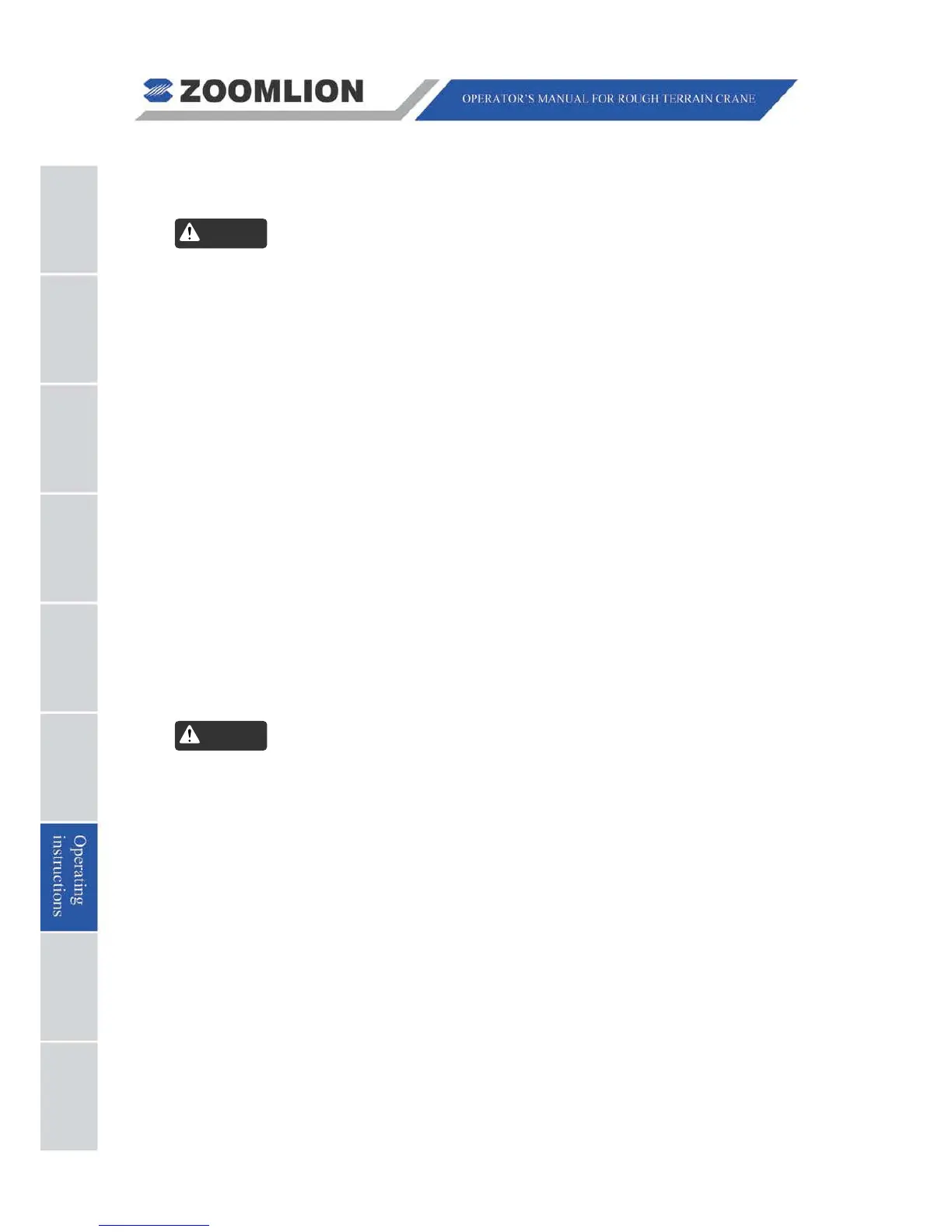07 - 50 RT60 Rough Terrain Crane
Due to variations in surface, tire pressure, bumps, potholes, etc., we recommend
that travel on side slopes be limited to 5° and that the boom be horizontal or below.
See the “ON TIRE LIFTS” instructions found later in this section for instructions on
moving the crane with a load.
7. 21 “ON TIRES” LIFTS
Listed below are special precautions for “On Tires” lifts.
a) The boom shall be carried straight over the front of the crane;
b) Travel speed reduced to suit working conditions;
c) Maintain specified tire pressures;
d) Avoid sudden starts and stops;
e) Provide tag or restraint lines to snub swinging of the load;
f) Keep the load as close to ground as possible;
g) Lock the swing brake and swing lock;
h) Travel must be on a smooth level surface that is capable of supporting the weight of
the loaded crane. The travel surface must also be free of holes or debris that can
cause crane instability.
These precautions are necessary to prevent a “pendulum” effect of a swinging load. The
results of this happening can cause a machine tip over.
(1) Any variation from the above conditions will require the operator to consider
the prevailing conditions and reduce the lift capacities accordingly. Insufficient
tire pressure reduces the “ON TIRES” capacity. Attempts to pick rated capacity
without properly inflated tires may cause crane to tip and/or result in damage to
tires and rims;
(2) Excessive high hydraulic oil temperatures cause rapid deterioration of rubber
components (hose, O-rings, etc.). If hydraulic reservoir temperature reaches
80
℃(176°F), reduce the duty cycle. Stop operations as required to prevent
further increase in the hydraulic oil temperature;
(3) “Creep” means the crane can be moved at a maximum speed of 1.6 KM/h for a
distance of 18 M (60 ft) and then stop for 30 minutes to cool the tires.
Overheating will greatly reduce the life of the tires.
